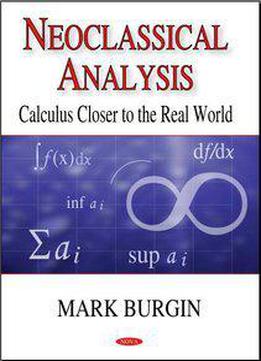
Neoclassical Analysis: Calculus Closer To The Real World
by Mark Burgin /
2008 / English / PDF
6.9 MB Download
Neoclassical analysis extends methods of classical calculus to reflect uncertainties that arise in computations and measurements. In it, ordinary structures of analysis, that is, functions, sequences, series, and operators, are studied by means of fuzzy concepts: fuzzy limits, fuzzy continuity, and fuzzy derivatives. For example, continuous functions, which are studied in the classical analysis, become a part of the set of the fuzzy continuous functions studied in neoclassical analysis. Aiming at representation of uncertainties and imprecision and extending the scope of the classical calculus and analysis, neoclassical analysis makes, at the same time, methods of the classical calculus more precise with respect to real life applications. Consequently, new results are obtained extending and even completing classical theorems. In addition, facilities of analytical methods for various applications also become more broad and efficient.











